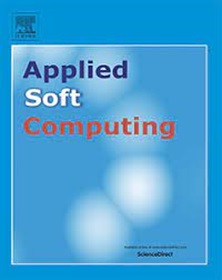Air quality index prediction through TimeGAN data recovery and PSO-optimized VMD-deep learning framework
IF 7.2
1区 计算机科学
Q1 COMPUTER SCIENCE, ARTIFICIAL INTELLIGENCE
引用次数: 0
Abstract
With the rapid development of the economy, air pollution has become increasingly severe. Accurate prediction of the Air Quality Index (AQI) is crucial for safeguarding public health and the environment. However, AQI time series exhibit strong randomness and volatility, posing challenges for traditional forecasting methods to achieve precise AQI predictions. Therefore, we propose a new AQI hybrid prediction model, TG-Hybrid model, which integrates generative artificial intelligence, signal decomposition techniques, artificial intelligence methods, and optimization algorithms. In the proposed model, missing values in the data are handled using generative adversarial networks, effectively addressing the issue of a large number of missing values in time series data. Autoregressive integrated moving average is employed to forecast the linear components of the data, while variational mode decomposition decomposes AQI into multiple modes. Particle swarm optimization is used to combine the prediction results of convolutional neural network combined with bidirectional long short-term memory and extreme gradient boosting. Additionally, AQI prediction experiments were conducted using air pollution data from Tangshan and Beijing, and compared with fifteen other models. The results indicate that the root mean square error for Tangshan and Beijing are 6.407 and 7.485, respectively, significantly outperforming other baseline models.
求助全文
约1分钟内获得全文
求助全文
来源期刊

Applied Soft Computing
工程技术-计算机:跨学科应用
CiteScore
15.80
自引率
6.90%
发文量
874
审稿时长
10.9 months
期刊介绍:
Applied Soft Computing is an international journal promoting an integrated view of soft computing to solve real life problems.The focus is to publish the highest quality research in application and convergence of the areas of Fuzzy Logic, Neural Networks, Evolutionary Computing, Rough Sets and other similar techniques to address real world complexities.
Applied Soft Computing is a rolling publication: articles are published as soon as the editor-in-chief has accepted them. Therefore, the web site will continuously be updated with new articles and the publication time will be short.
 求助内容:
求助内容: 应助结果提醒方式:
应助结果提醒方式:


